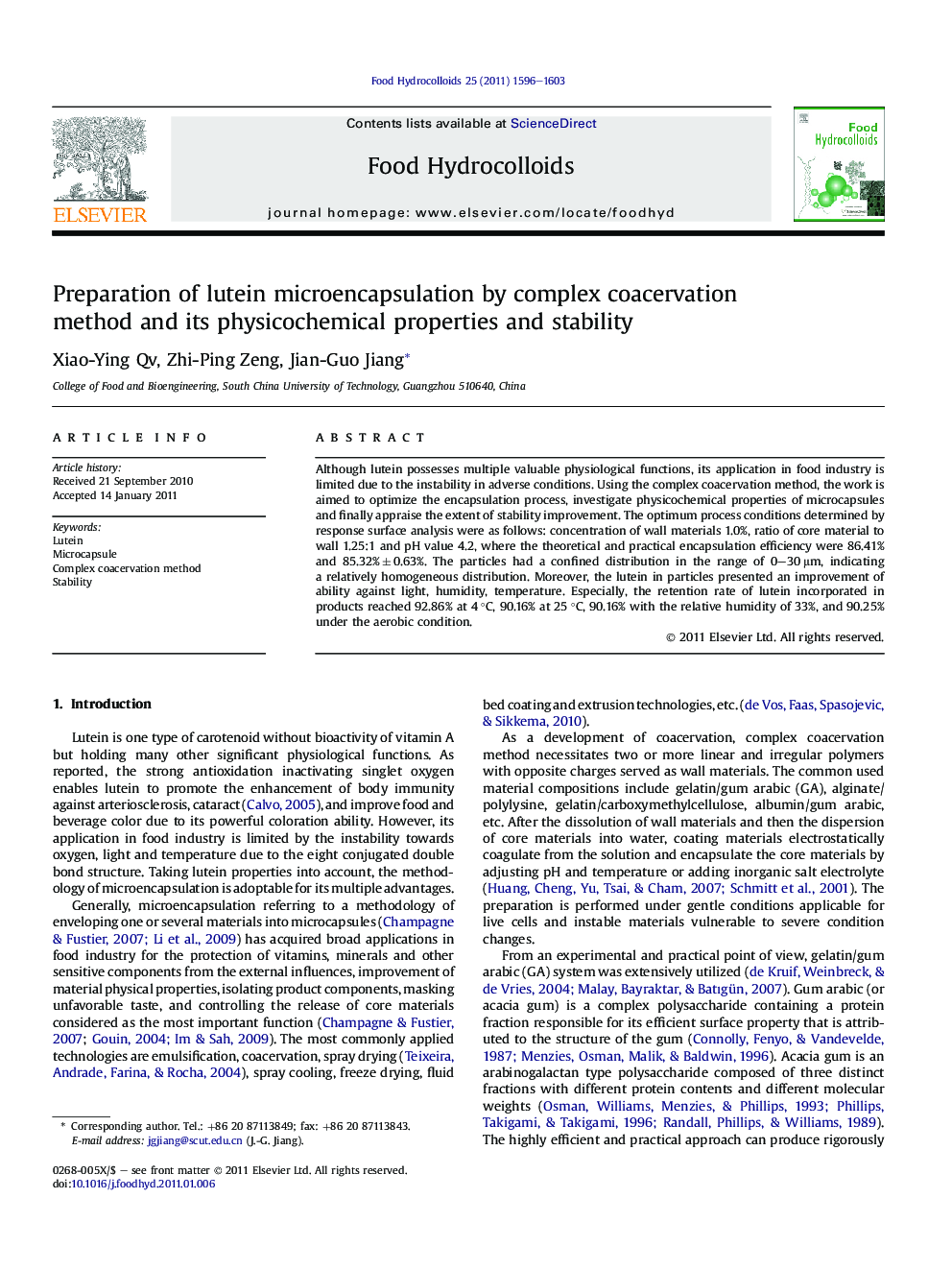| Article ID | Journal | Published Year | Pages | File Type |
|---|---|---|---|---|
| 604561 | Food Hydrocolloids | 2011 | 8 Pages |
Although lutein possesses multiple valuable physiological functions, its application in food industry is limited due to the instability in adverse conditions. Using the complex coacervation method, the work is aimed to optimize the encapsulation process, investigate physicochemical properties of microcapsules and finally appraise the extent of stability improvement. The optimum process conditions determined by response surface analysis were as follows: concentration of wall materials 1.0%, ratio of core material to wall 1.25:1 and pH value 4.2, where the theoretical and practical encapsulation efficiency were 86.41% and 85.32% ± 0.63%. The particles had a confined distribution in the range of 0–30 μm, indicating a relatively homogeneous distribution. Moreover, the lutein in particles presented an improvement of ability against light, humidity, temperature. Especially, the retention rate of lutein incorporated in products reached 92.86% at 4 °C, 90.16% at 25 °C, 90.16% with the relative humidity of 33%, and 90.25% under the aerobic condition.
Graphical abstractThe optimum process for lutein microencapsulation was: CWM 1.0%, RCW 1.25:1, and pH 4.2. The particles had the biggest proportion in the range of 10–20 μm.Figure optionsDownload full-size imageDownload as PowerPoint slide
